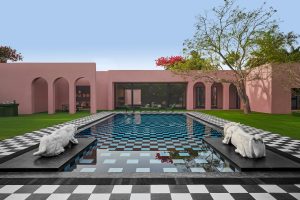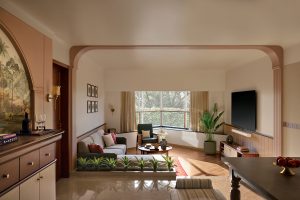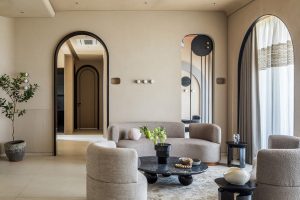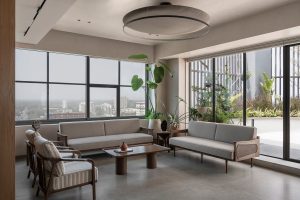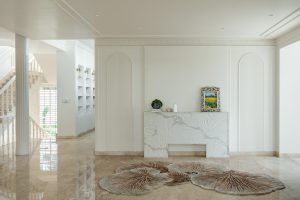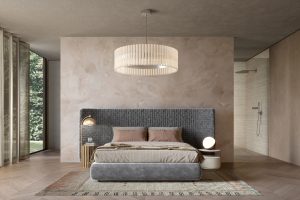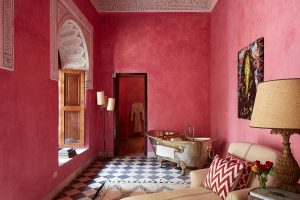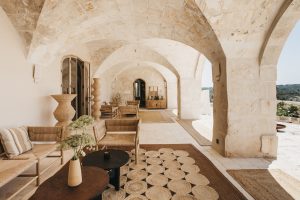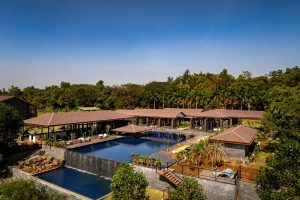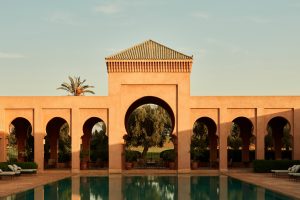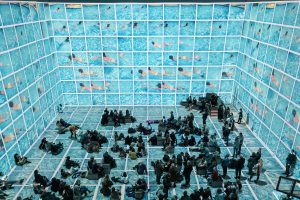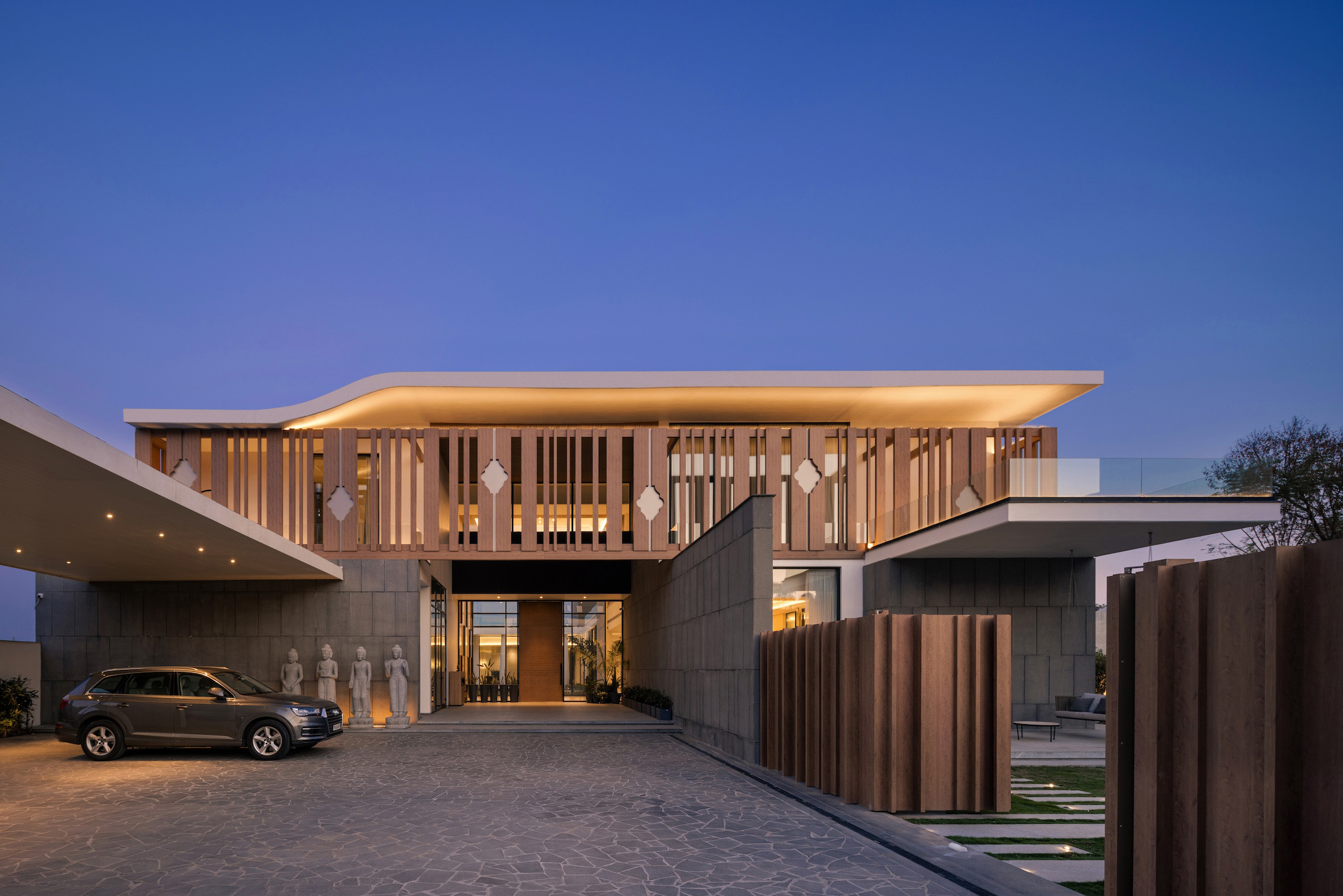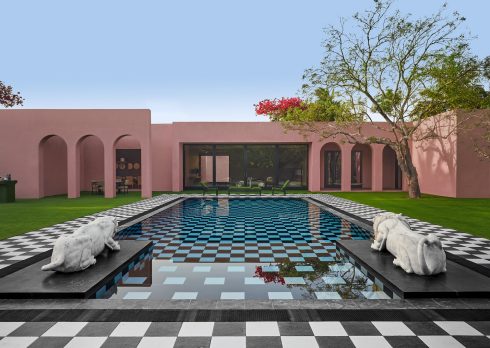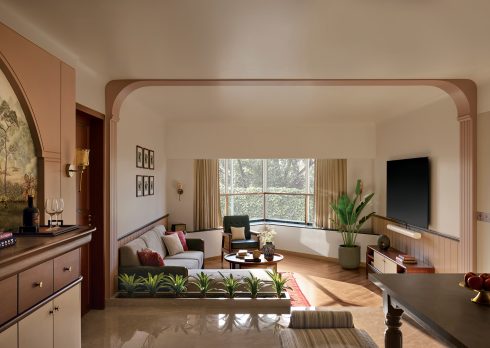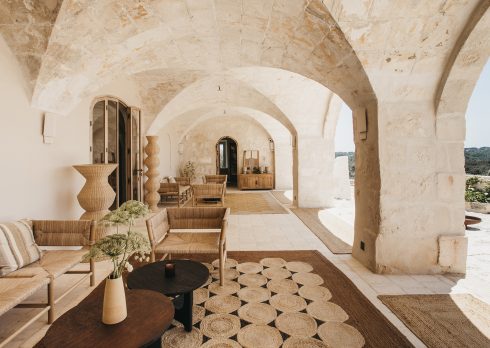#DPExclusive: This Amritsar Home Is A Modernist Utopia Rooted In Tradition
An upscale Amritsar residence where cutting-edge luxury intertwines effortlessly with nature's serene embrace. Explore this architectural marvel, a tranquil sanctuary exuding contemporary elegance and subtle Indian heritage.
It’s often said that a Buddha sculpture in the courtyard will watch over and protect the serenity of your home. Reclining against a backdrop of viridescence foliage, this 25-feet-Singhasana imported from Bali overlooks an outdoor lounge where family members can congregate around a fire pit — it is a beloved space to share local folklore and recipes for trouble. In Amritsar, the turn of the century saw an outcrop of such minimalistic residences suffused with vernacular temple motifs, as a nod to the resurging appreciation for Indian craftsmanship. Named after one of the most erudite figures in 6th century Buddhism, ‘Ananda’ is a monumental 20,000 sq. ft. abode by 23DC Architects, flitting ethereally between past and present. Unravelling like a luminous Thangka scroll, this modernist fusion house has been designed by Ar. Shiv Dada and Ar. Mohit Chawla, with interior styling by Saniya Tadha.

The ground floor features a spectacular double-volume living room, formal dining areas, a parlour to receive guests, a guest bedroom with a clear backyard view and a service kitchen. A hypnotic spiral staircase leads you to the upper level where the principal resting chambers are deftly tucked away for unperturbed privacy.
“The client’s vision was to incorporate all five elements—air, water, fire, earth, and sky—into the design,” say the architects about the overarching concept. Structures in the modernist vein are often characterised by flat roofs, free-flowing floor plans, and frugal ornamentation and this building does the same. In their version, the architects added a touch of heritage and tradition to punctuate the ‘form follows function’ ideology with an apostrophe of aesthetic fulfilment.

The entrance foyer with steps is flanked by a quadruplet of monolithic Angkor-style Buddhist statues, warding off the evil eye. The use of a delicately carved jali second skin makes an imposing façade even more unforgettable. The beautiful pivot door that invites you in is accompanied by a cement-finished wall on the other side.
Also read: #DPExclusive- This Modern Penthouse In Mumbai Is An Elegy To Organic Materials And Embossed Surfaces
A Profusion Of Textures
Upon entering the house, visitors are welcomed into a double-height space that overlooks the central courtyard and its grand Buddha statue through massive windows ushering in radiance. This initial view sets a tranquil tone for the rest of the design odyssey. A standout element is the feature wall with its staggered lapping, each panel a homage to glorious dimensionality, creating a mosaic of textures and shadows. Hovering from the ceiling, the hand-blown glass feathers of a Hybec chandelier are an abstract rendition of birds in mid-flight, dispersing a sublimeness that feels otherworldly.

Tranquillity Amidst Urban Chaos
The C-shaped configuration of Ananda is underscored by sprawling passages, which breathe life into the palatial dreams of the homeowners. Enveloped by the susurrus of the Zen garden, one is never far away from nature’s euphony. From the gentle prattle of the swimming pool to an immersive rain shower, there is a calming soundscape in the home that wouldn’t be out of place in a tropical jungle. “At the core of the design philosophy was the concept of fluidity—a seamless transition between indoor and outdoor spaces, allowing inhabitants to bask in the beauty of nature from every corner of the house,” the architects tell DP.
Also read: Sourcing Secrets With Apoorva and Rajiv of reD Architects – The Office Edit

Lessons In Spatial Fluidity
Before arriving at the living room, visitors can peek through intricate wooden louvres at a clandestine antechamber, where the neutral accent wall brings motion into verticality with pleated folds in its veneer panelling. This masterstroke of delineating the physical space into a hideaway niche was crucial to imbue a degree of openness, ensuring that light and vision remain unhampered whilst upholding personal boundaries.

The mid-century furniture imported from China endows the material palette with unostentatious elegance. Adjacent to this, one encounters the formal dining and living area, drenched in opaque muted hues to avoid overshadowing the surrounding landscape. Colossal French windows gaze out at the swimming pool, surrounded by a cornucopia of bamboo and banana plantation trees, transforming daily chores into a hedonistic indulgence. While the island kitchenette is ideal for fixing a hot cuppa or the odd midnight snack; to insulate living spaces from the fugue of a hot luncheon, the service kitchen is tucked deeper away from sight with tasteful discretion.
Also Read: This Kozhikode Office Exemplifies The Rustic Minimalist Aesthetic

Cross-Currents Of Tradition And Innovation
The house contains bedrooms on both levels. Each bedroom has furniture pieces picked out from myriad international boutiques—an element that adds a distinguished cosmopolitan air to these spaces. They have also been meticulously dotted with custom artwork by Aarti Mehra and carpets from Dhiri Rugs that pique visual interest. “Minimalistic yet striking, the design incorporates subtle Indian detailing into the architectural elements, infusing the space with a sense of heritage,” the architects reiterate.
Passing The Sustainability Test
Vernacular architecture is inherently climate-responsive. Indigenous designs often feature courtyards, jalis or lattice screens, and verandas that enhance natural ventilation, making homes more energy-efficient. Integrating these elements into modern designs reduces reliance on artificial climate control systems. Whether it’s unwinding by the firepit, taking a dip in the outdoor pool, or simply basking in the beauty of the grounds teeming with exotic vegetation, every stylistic choice has made Ananda a harmonious sanctuary.


